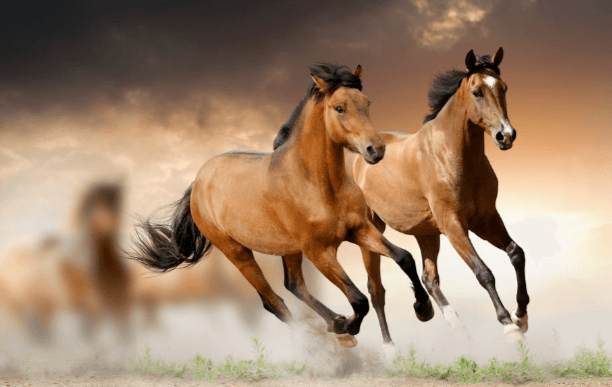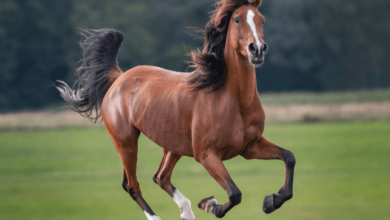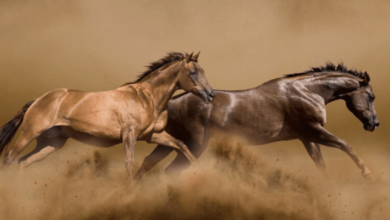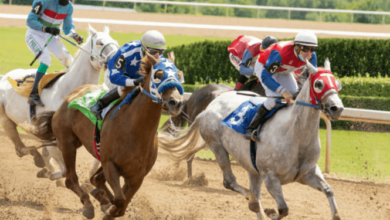What strategies do you use to improve a horse’s speed and stamina?

Introduction
Enhancing a horse’s speed and stamina is crucial for success in various equestrian disciplines, from racing to endurance riding. The process involves a combination of effective training programs, balanced nutrition, and adequate recovery. This article explores strategies to improve a horse’s speed and stamina, providing comprehensive insights to help your horse reach its full potential.
Understanding Equine Physiology
To effectively improve a horse’s speed and stamina, it’s essential to understand equine physiology. Horses possess a robust cardiovascular system, large lung capacity, and powerful muscles, enabling them to perform high-intensity activities. Knowing how these systems function helps in designing effective training and nutrition plans.
Tailored Training Programs
Interval Training
Interval training is a proven method to enhance both speed and stamina. This approach involves alternating between high-intensity exercise and rest periods. For instance, you can gallop your horse for a short distance and then walk to allow recovery. This technique improves cardiovascular fitness and builds muscle strength.
Long Slow Distance (LSD) Training
LSD training focuses on building endurance by maintaining a steady, moderate pace over long distances. This method helps develop the horse’s aerobic capacity, enabling sustained performance over extended periods.
Hill Work
Incorporating hill work into your training routine can significantly boost strength and stamina. Uphill exercises enhance muscle development and cardiovascular efficiency, while downhill work improves balance and coordination.
Sprint Training
Sprint training involves short bursts of high-speed running, followed by rest. This type of training develops fast-twitch muscle fibers, crucial for explosive speed. Regular sprint training sessions can make a significant difference in your horse’s overall speed.
Nutrition and Hydration
Balanced Diet
A balanced diet is fundamental to improving a horse’s performance. High-quality forage, such as hay and grass, should form the base of the diet. Grains and concentrates provide additional energy required for high-performance activities.
Protein and Fat
Proteins are vital for muscle repair and growth, while fats offer a long-lasting energy source. Incorporating these nutrients into the diet ensures that your horse has the necessary fuel for training and recovery.
Electrolytes and Hydration
Horses lose significant amounts of electrolytes through sweat during intense exercise. Providing electrolyte supplements and ensuring proper hydration helps maintain performance levels and prevents dehydration.
Recovery and Rest
Cool-Down Periods
Allowing your horse to cool down gradually after intense exercise is crucial. Walking for 10-15 minutes post-workout helps prevent muscle stiffness and promotes faster recovery.
Massage and Stretching
Regular massages and stretching exercises can alleviate muscle tension and improve flexibility. These practices enhance blood circulation, aiding in quicker recovery and reducing the risk of injuries.
Adequate Rest
Rest is as important as training. Overworking your horse can lead to fatigue and injuries. Ensure your horse gets sufficient rest between intense training sessions to recover fully.
Monitoring and Assessment
Regular Health Checks
Frequent health assessments by a veterinarian ensure your horse remains in peak condition. Monitoring heart rate, respiratory rate, and overall physical condition helps identify potential issues early.
Performance Tracking
Tracking your horse’s performance helps in adjusting training programs as needed. Record metrics such as timed runs and distances covered to monitor progress and make necessary adjustments.
Mental Conditioning
Desensitization Training
Mental fitness is as important as physical fitness. Desensitization training reduces anxiety and improves focus, crucial during competitions.
Positive Reinforcement
Using positive reinforcement techniques, such as treats and praise, motivates your horse and creates a positive training environment. This helps build trust and encourages cooperation.
Custom Training Plans
Individualized Approach
Every horse is unique, and what works for one may not work for another. Tailor your training programs to fit the specific needs and capabilities of your horse.
Consultation with Experts
Seeking advice from equine trainers, veterinarians, and nutritionists provides valuable insights and helps create an effective training strategy.
FAQs
What is the best type of training to improve a horse’s speed? Interval training, which involves short bursts of high-intensity work followed by rest, is highly effective for improving a horse’s speed.
How can I build my horse’s stamina? Long slow distance (LSD) training, involving steady, moderate-paced riding over long distances, is excellent for building stamina.
What should I feed my horse to enhance performance? A balanced diet with high-quality forage, grains, proteins, and fats, along with adequate hydration and electrolyte supplements, supports optimal performance.
How important is rest in a horse’s training program? Rest is crucial to prevent fatigue and injuries. It allows the horse to recover and build strength, making rest periods an integral part of any training program.
Can mental conditioning impact a horse’s performance? Yes, mental conditioning, including desensitization training and positive reinforcement, helps reduce anxiety and improve focus, which are essential for competition performance.
How often should I assess my horse’s health? Regular health checks by a veterinarian are essential. Additionally, monitoring performance metrics frequently helps adjust training programs effectively.
Conclusion
Improving a horse’s speed and stamina requires a comprehensive approach, including tailored training programs, balanced nutrition, adequate rest, and mental conditioning. Understanding your horse’s unique needs and working with equine experts can significantly enhance performance, helping you achieve your equestrian goals.






